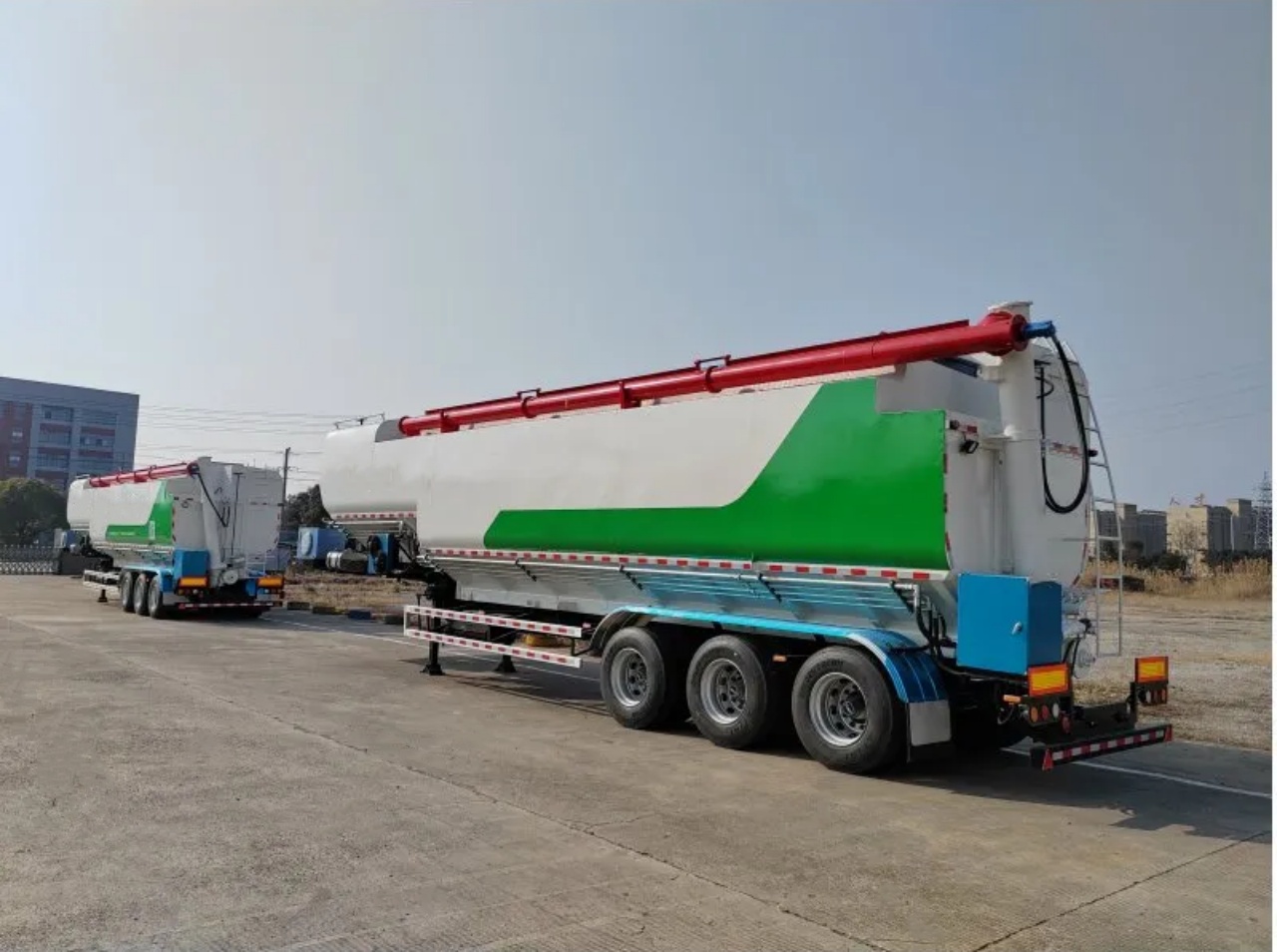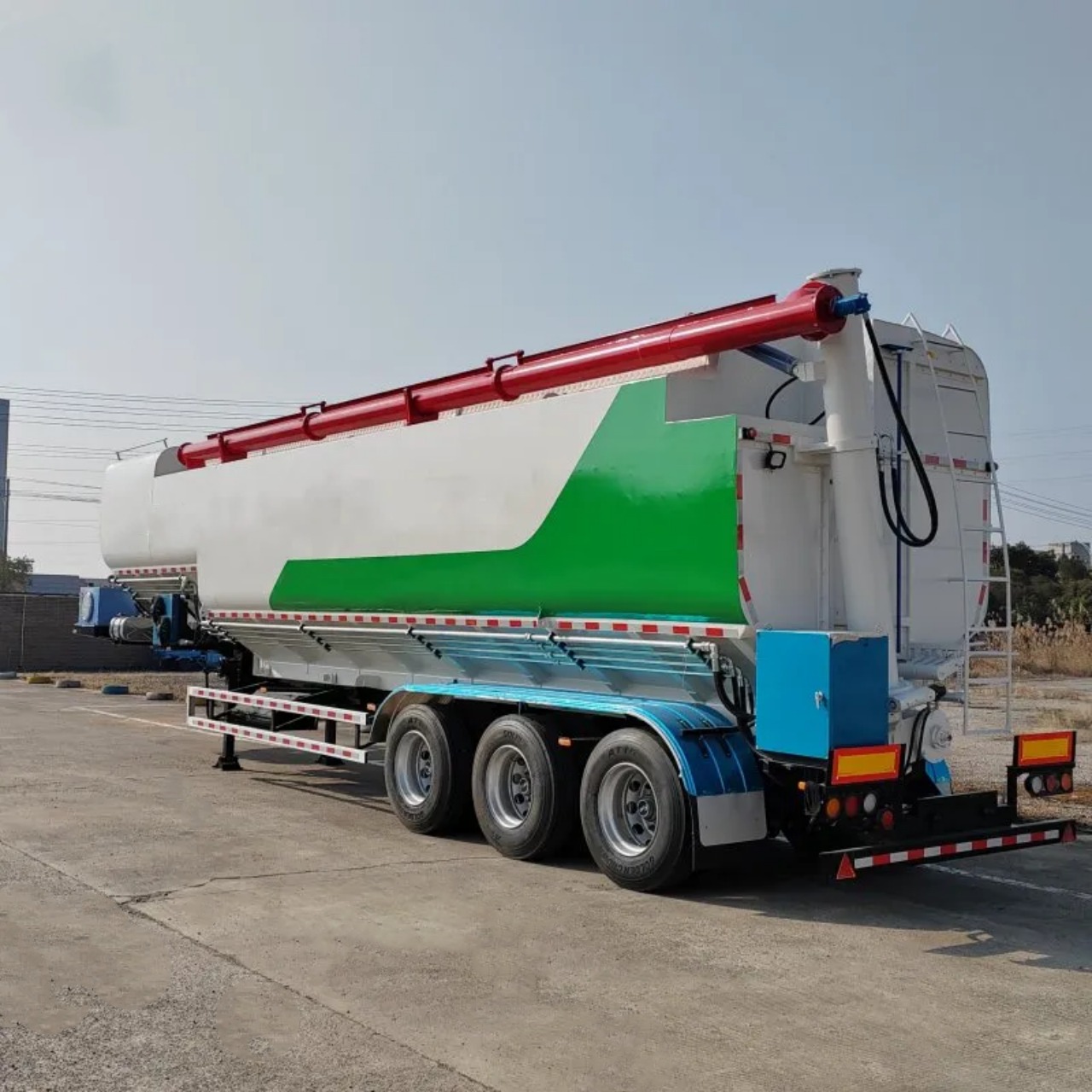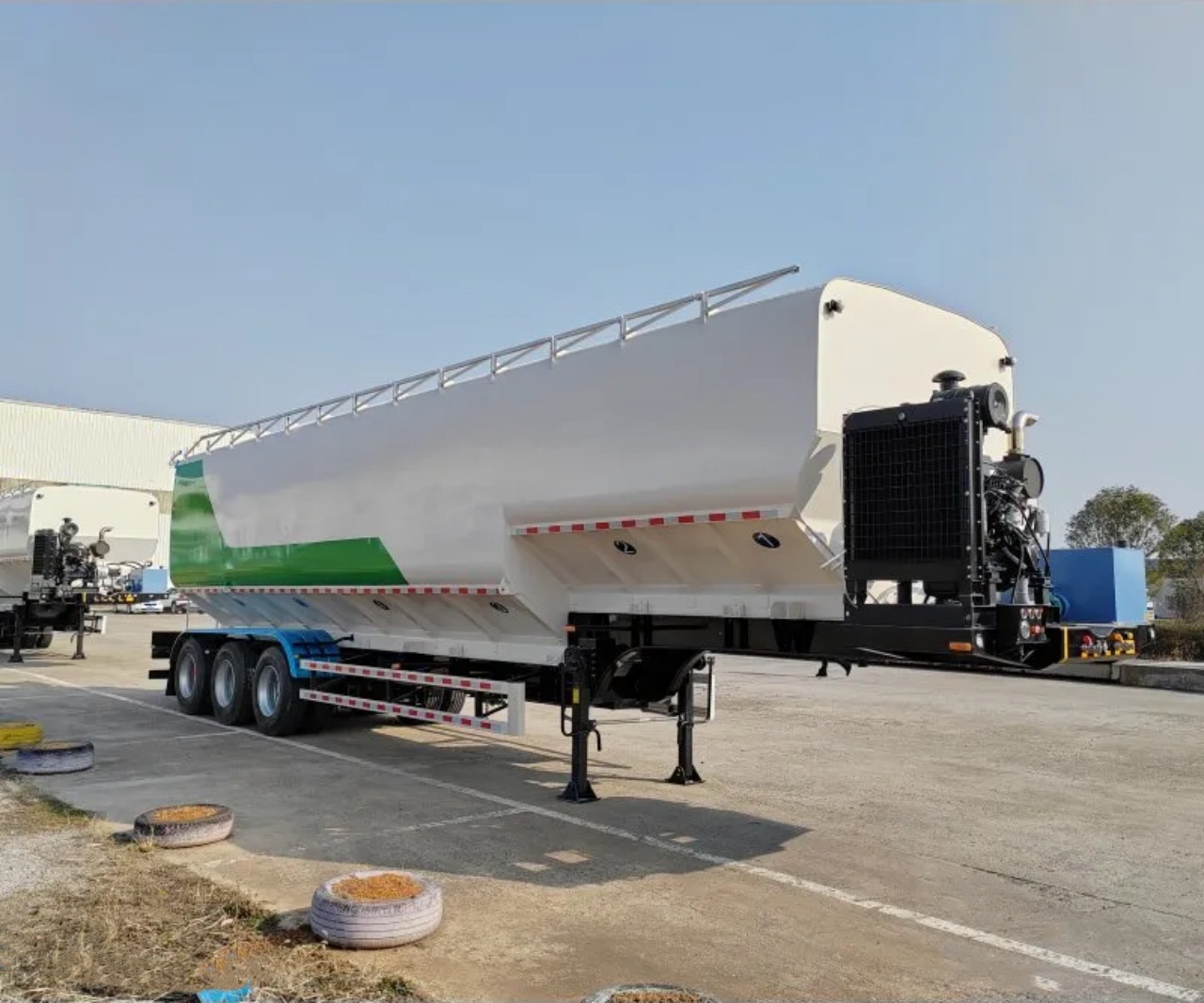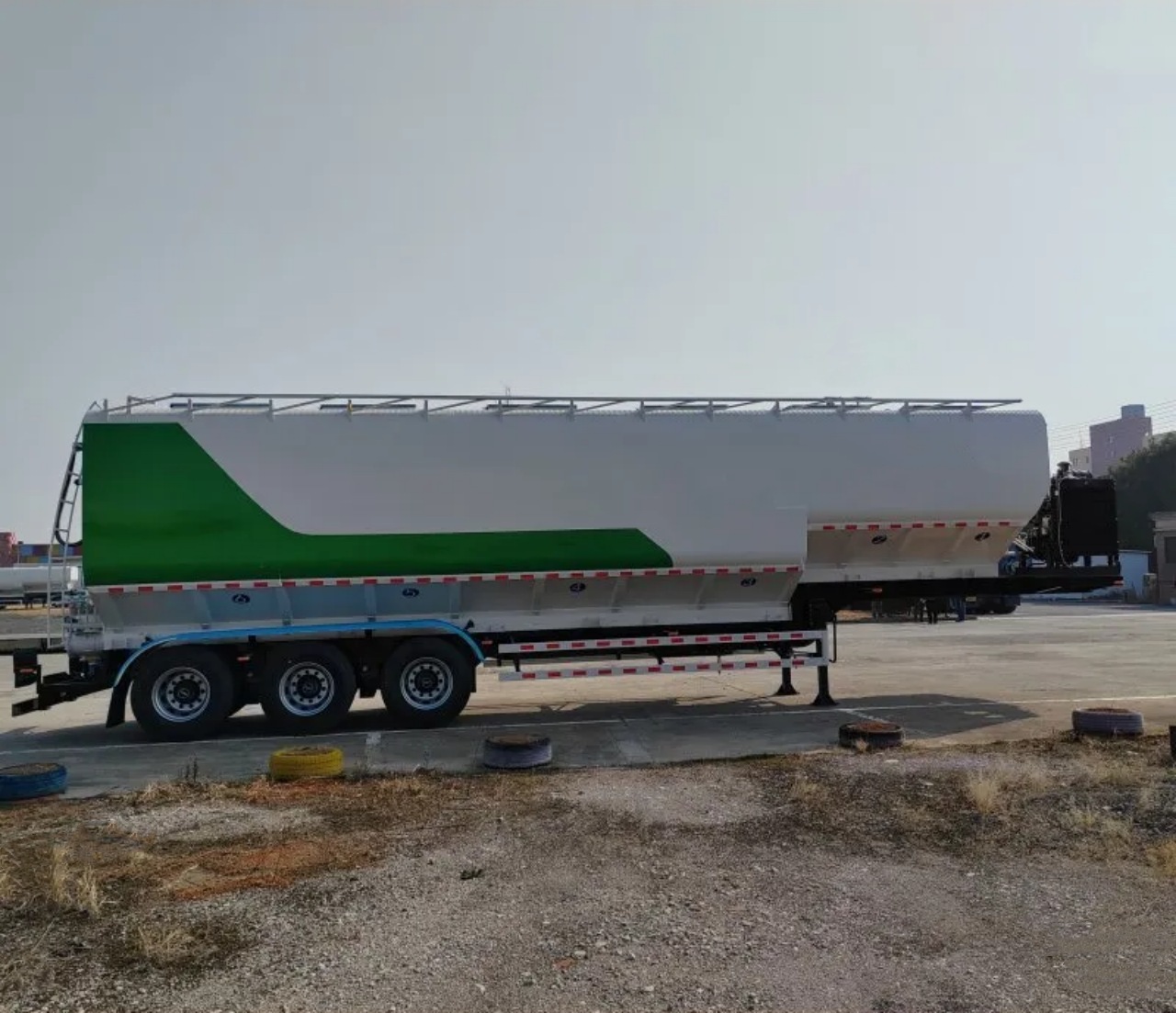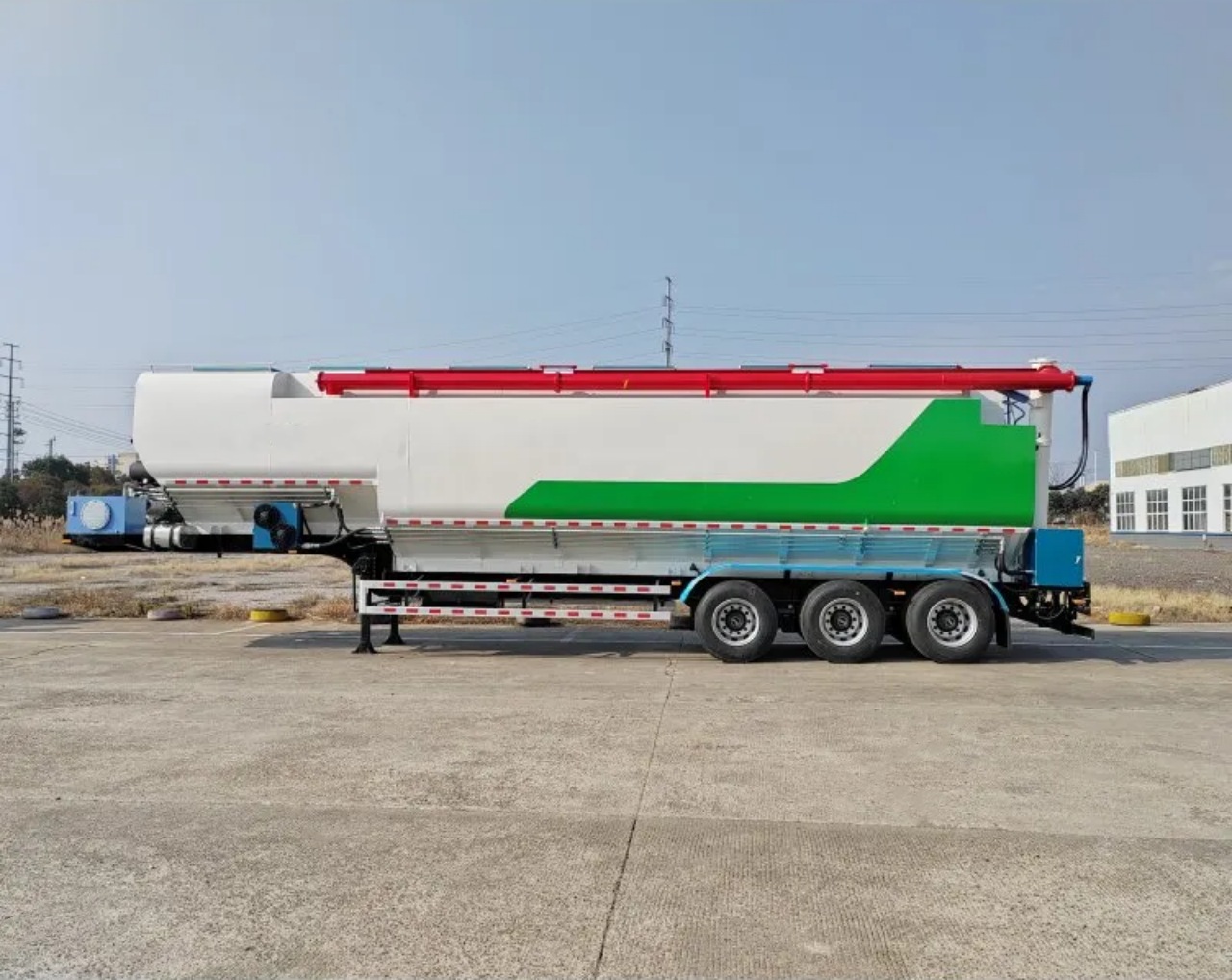Pneumatic trailers, also known as dry bulk trailers or pneumatic tankers, are specialized transport vehicles designed to haul dry, flowable commodities such as cement, flour, plastic pellets, sand, and other fine-grained bulk products. Their defining feature is their ability to unload cargo through a pressurized air system rather than tilting the trailer. This makes them highly efficient for operations requiring clean, fast, and contamination-free product delivery. A central question for fleet operators, logistics planners, and shippers is: How much weight can a pneumatic trailer haul?
The answer depends on several factors, including the trailer’s design, size, axle configuration, construction material, and the legal weight limits imposed by regional transportation authorities. In this article, we’ll explore each of these factors and provide a comprehensive understanding of the hauling capacity of pneumatic trailers.
1. Understanding the Design of Pneumatic Trailers
A pneumatic trailer typically consists of a cylindrical tank mounted horizontally on a trailer frame, divided into multiple hoppers. Each hopper has an outlet cone and a series of valves used to regulate the flow of pressurized air during unloading. These tanks are usually made from aluminum or stainless steel, which provides strength while keeping the tare weight low.
The most common configurations are:
- Single-axle trailers: Rare for heavy loads, often used for short-distance or light-duty applications.
- Tandem-axle trailers: The most common setup for heavy-duty operations.
- Tridem or quad-axle configurations: Used in areas where higher weight limits are allowed.
2. Tare Weight vs. Payload Capacity
To determine how much weight a pneumatic trailer can haul, it’s essential to distinguish between tare weight (the empty weight of the trailer) and gross vehicle weight rating (GVWR), which is the total permissible weight of the loaded vehicle.
- Tare Weight: Pneumatic trailers usually have a tare weight ranging from 10,000 to 14,000 pounds (4,500 to 6,350 kg), depending on their size, axle configuration, and materials.
- Typical GVWR: In the United States, the federal bridge formula allows a maximum GVWR of 80,000 pounds (36,287 kg) on interstate highways without special permits.
Thus, a pneumatic trailer with a tare weight of 12,000 pounds can legally carry up to 68,000 pounds (30,844 kg) of cargo, provided axle weight limits are not exceeded.
3. Trailer Capacity by Volume and Commodity Density
Even if a trailer can legally carry a certain weight, the actual amount it can haul depends on the bulk density of the material.
- Trailer Volumes: Most standard pneumatic trailers come in sizes from 1,000 to 1,600 cubic feet (28 to 45 m³). Larger units may go up to 2,000 cubic feet (56 m³) or more for light-density commodities.
- Commodity Densities:
- Cement: ~94 lb/ft³
- Flour: ~32-40 lb/ft³
- Plastic Pellets: ~35-55 lb/ft³
- Sand: ~100 lb/ft³
Let’s take a 1,000 cubic foot trailer hauling cement (at 94 lb/ft³):
- 1,000 ft³ × 94 lb/ft³ = 94,000 lb cargo.
- But if GVWR limits the payload to 68,000 lb, the trailer would not be filled.
This illustrates a critical point: high-density products will “weigh out” before the trailer “cubes out,” whereas low-density products might fill the trailer without hitting the weight limit.
4. Regional and Permit-Based Variations
Legal weight limits vary by jurisdiction and can significantly influence how much a pneumatic trailer can haul:
- United States: 80,000 lb is the standard without permits. Some states allow higher weights with permits or more axles.
- Canada: Provinces like Alberta and British Columbia allow up to 140,000 lb (63,500 kg) with specific axle configurations and longer trailers.
- Europe: Typically allows 40,000 kg (88,000 lb) for articulated vehicles, but configurations vary.
- Australia: With road trains and multi-trailer setups, weights can exceed 120,000 kg (264,000 lb).
Always verify local laws and road limitations when planning operations.
5. Axle Configuration and Load Distribution
Proper axle configuration is critical for maximizing legal payload while minimizing wear and tear:
- Tandem Axle (2 axles): Most common, supports around 34,000 lb (15,422 kg) combined.
- Tridem Axle (3 axles): Increases legal load capacity and distributes weight better.
- Lift Axles: Optional axles that can be lowered when needed to carry heavier loads.
Each axle group must comply with legal weight limits to avoid fines or road damage, so pneumatic trailers are designed with optimal load distribution in mind.
6. Impact of Trailer Material and Construction
Lightweight construction allows for greater payloads. Here’s how materials impact tare weight:
- Aluminum Trailers: Preferred for their low weight; typically reduce tare weight by 1,000–2,000 lb.
- Steel Trailers: Heavier, but more durable and often used for abrasive materials like sand.
- Composite Materials: Used increasingly for specialized applications, balancing weight and durability.
Investing in lightweight trailers pays off in fuel savings and additional payload capacity over time.
7. Specialized Pneumatic Trailers
Specialized trailers can be tailored to specific cargo types:
- High-Cube Trailers: Optimized for low-density products like flour or plastic pellets.
- Low-Profile Trailers: Designed for improved stability and easier unloading.
- Vacuum-Assist Systems: Allow trailers to load certain products without gravity feed.
These designs can affect how much weight can be carried safely and legally.
8. Real-World Examples
To give a clearer picture, here are a few practical examples:
- Example 1: A 1,040 cubic foot aluminum pneumatic trailer with a tare weight of 11,500 lb hauls cement. Legal payload: ~68,500 lb. It can load about 729 ft³ of cement before reaching the weight limit.
- Example 2: A 1,600 cubic foot trailer hauling plastic pellets (~40 lb/ft³). Total cargo weight = 64,000 lb, which fits under the legal limit while using the full volume.
- Example 3: A quad-axle trailer in Canada legally hauls 110,000 lb gross weight. With a 12,000 lb tare, it could move up to 98,000 lb of dry product—ideal for short-haul cement routes.
Conclusion
Pneumatic trailers are powerful tools in the dry bulk transport industry, offering clean, efficient, and versatile delivery capabilities. The weight a pneumatic trailer can haul depends on legal GVWR limits, trailer design, axle configuration, and the density of the material being transported. While a standard pneumatic trailer operating under U.S. DOT rules can haul around 68,000 pounds of payload, variations in trailer volume, materials, and regional laws can push that number higher or lower.
Fleet managers must balance legal regulations, product characteristics, and equipment design to optimize hauling capacity. Whether you’re transporting lightweight plastic resin or dense cement, understanding the interplay between weight, volume, and regulations is essential for maximizing operational efficiency.
